How to Properly Pace Yourself During Endurance Swims
22 December 2024
Swimming is one of the most physically demanding sports out there. And when it comes to endurance swims, pacing yourself properly can make or break your performance. Whether you're training for a triathlon, open-water competition, or simply want to improve your long-distance swimming, understanding how to pace yourself is key to success.
But let's be real—pacing in swimming isn't as straightforward as it is in running or cycling. You've got the water, the breathing rhythm, and the constant need to maintain proper form. All of these elements can throw off your pace if you're not careful. So, how do you find that sweet spot where you're swimming efficiently without burning out too soon?
In this guide, we’ll dive (pun intended) into how to properly pace yourself during endurance swims. We'll explore techniques, strategies, and tips to help you stay consistent in the water while conserving energy for the long haul.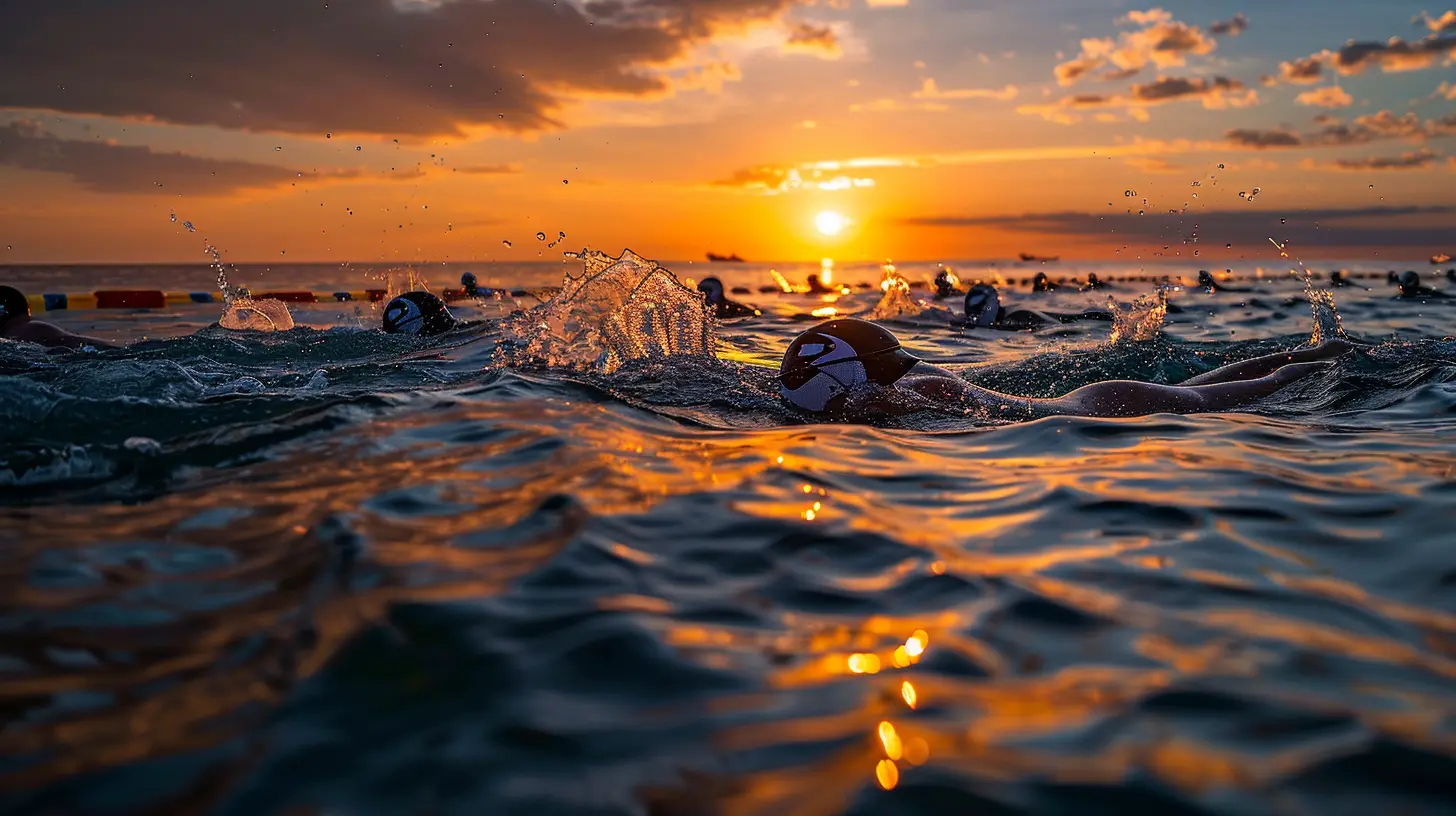
Why Pacing Is Crucial in Endurance Swims
Pacing yourself during any endurance activity is essential, but it's especially crucial in swimming, where energy conservation and technique go hand in hand. Think of swimming like driving a car. If you start with full throttle, you're going to run out of gas in no time. But if you start slow and steady, you’ll have enough fuel to reach your destination, and maybe even speed up toward the end.In swimming, the goal is to find a pace that allows you to maintain your stroke efficiency, minimize fatigue, and conserve energy for the latter stages of your swim. If you push too hard from the get-go, you'll likely burn out before you reach the finish line. On the flip side, if you're too slow, you're not maximizing your potential. It's all about finding that balance.
The Consequences of Poor Pacing
Before we jump into how to pace yourself correctly, let's quickly touch on what happens if you don't. Ever felt like you were halfway through your swim, and suddenly, your arms feel like lead? That's a classic sign of poor pacing. You may also feel like you're gasping for air or that your strokes are becoming sloppy. These are all indications that you've burned through your energy reserves too quickly.Poor pacing can also lead to:
- Mental fatigue: When your body is struggling, your mind is too. You'll start second-guessing yourself, which can kill your motivation.
- Loss of technique: As you tire, it becomes harder to maintain proper form. This can slow you down even more and increase the risk of injury.
- Inconsistent splits: If you're timing your swims, poor pacing will result in inconsistent lap times, with your speed dropping off drastically as you progress.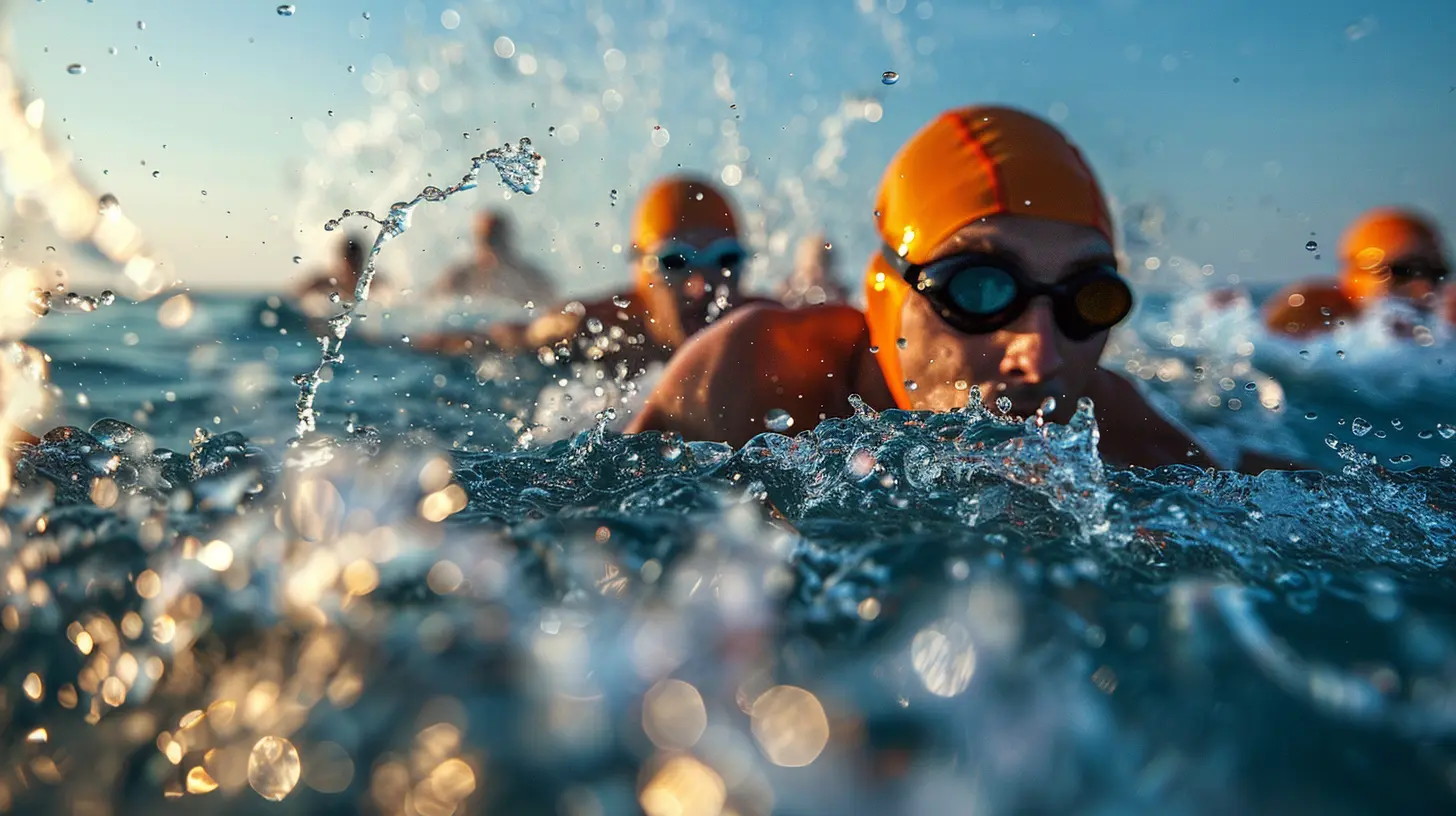
How to Properly Pace Yourself During Endurance Swims
Now that you know why pacing is important, let's talk about how you can actually do it. Pacing in swimming is a skill that takes time to develop, but with the right strategies, you can make significant improvements quickly.1. Find Your Baseline Pace
Before you can improve your pacing, you need to know where you're starting from. This is your "baseline pace"—the speed you can comfortably maintain over a long distance without exhausting yourself. To determine your baseline pace, you can try a simple test:- Swim a set distance (let's say 400 meters) at a moderate effort.
- Time yourself and note how you feel at the end. Could you have gone faster? Were you too tired? This will give you a rough idea of your starting pace.
Once you have your baseline, you can start experimenting with faster or slower paces during your training sessions. Keep in mind that your baseline pace will vary depending on the distance you're swimming.
2. Break Your Swim Into Segments
One of the best ways to pace yourself during endurance swims is by breaking the distance into smaller, more manageable segments. This technique is called swimming in intervals. For example, if you're swimming 1,000 meters, you can mentally break it down into four 250-meter segments.Why does this help? Well, mentally, it's easier to focus on maintaining a steady pace for shorter distances rather than the entire swim. It also allows you to track your pace more effectively. You can time each segment and adjust accordingly if you find yourself speeding up or slowing down too much.
3. Use Your Breathing as a Guide
Your breathing pattern can be a great indicator of whether you're pacing yourself correctly. If you’re gasping for air or feel like you can’t catch your breath, you're likely swimming too fast. On the other hand, if your breathing is too relaxed, you might not be pushing yourself enough.For most endurance swims, a steady and rhythmic breathing pattern—such as breathing every 3 to 5 strokes—works well. This helps you stay oxygenated without overexerting yourself. It’s also a good idea to practice bilateral breathing (breathing on both sides) to balance your stroke and prevent fatigue in one arm more than the other.
4. Focus on Technique, Not Speed
When you're trying to pace yourself, it's tempting to focus solely on your speed. But here's the thing: speed comes from proper technique, not from brute force. If you try to swim faster by simply kicking harder or pulling more water, you're going to tire out quickly.Instead, focus on maintaining a streamlined body position, a strong pull, and an efficient kick. Good form allows you to swim faster without using more energy. Plus, when you focus on your technique, you'll naturally fall into a more consistent pace.
5. Use a Tempo Trainer
A great tool for pacing is a tempo trainer. This small, waterproof device clips onto your goggles or fits under your swim cap and beeps at regular intervals, helping you maintain a consistent stroke rate. You can set it to beep in time with your desired tempo, ensuring you don't swim too fast or too slow.Think of it like a metronome for swimmers. It helps you get into a rhythm and stick to it, which is crucial for long-distance swims.
6. Practice Negative Splits
Another effective pacing strategy is to practice negative splits. This means swimming the second half of your distance faster than the first half. For example, if you're swimming 800 meters, aim to complete the last 400 meters at a slightly faster pace than the first 400 meters.Negative splits help you conserve energy early on and finish strong. Plus, it trains your body to accelerate when you're already fatigued, which is a great skill to have in any endurance event.
7. Monitor Your Heart Rate
Your heart rate is one of the best indicators of how hard you're working. If you have a waterproof heart rate monitor, use it to keep track of your effort during endurance swims. Try to stay in your aerobic zone, which is about 60-70% of your maximum heart rate. This is where you're working hard but not so hard that you can't sustain it for a long period.Swimming in your aerobic zone will help you build endurance without overexerting yourself. If you notice your heart rate creeping up too high, it's a sign that you need to slow down and adjust your pace.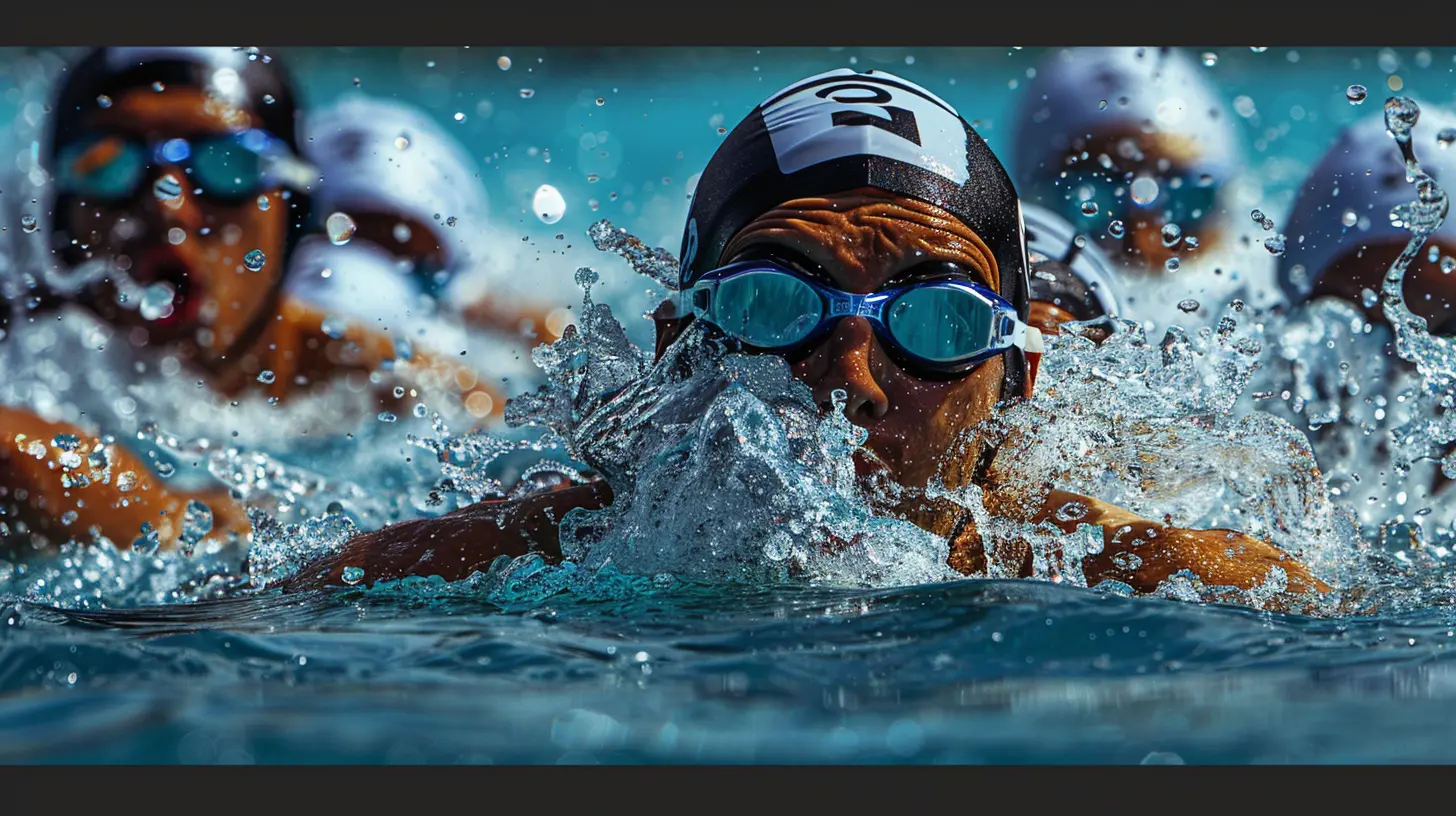
Common Mistakes to Avoid When Pacing in Swimming
Even with the best techniques, it’s easy to make mistakes when trying to pace yourself. Here are a few common pitfalls and how to avoid them:1. Starting Too Fast
This is probably the number one mistake swimmers make during endurance events. The adrenaline is pumping, and you feel good, so you push yourself right out of the gate. But remember, endurance swimming is a marathon, not a sprint. Starting too fast will leave you gassed halfway through your swim.2. Ignoring Your Form
As you get tired, it's easy to let your form slip. But poor technique leads to wasted energy, which will only slow you down further. Always focus on maintaining good body position, a strong pull, and a steady kick, even when you're fatigued.3. Being Inconsistent
Inconsistency in your pace can kill your endurance. One minute you're swimming fast, the next you're slowing down. This kind of erratic pacing can lead to burnout. Instead, aim for a pace that you can sustain throughout the swim.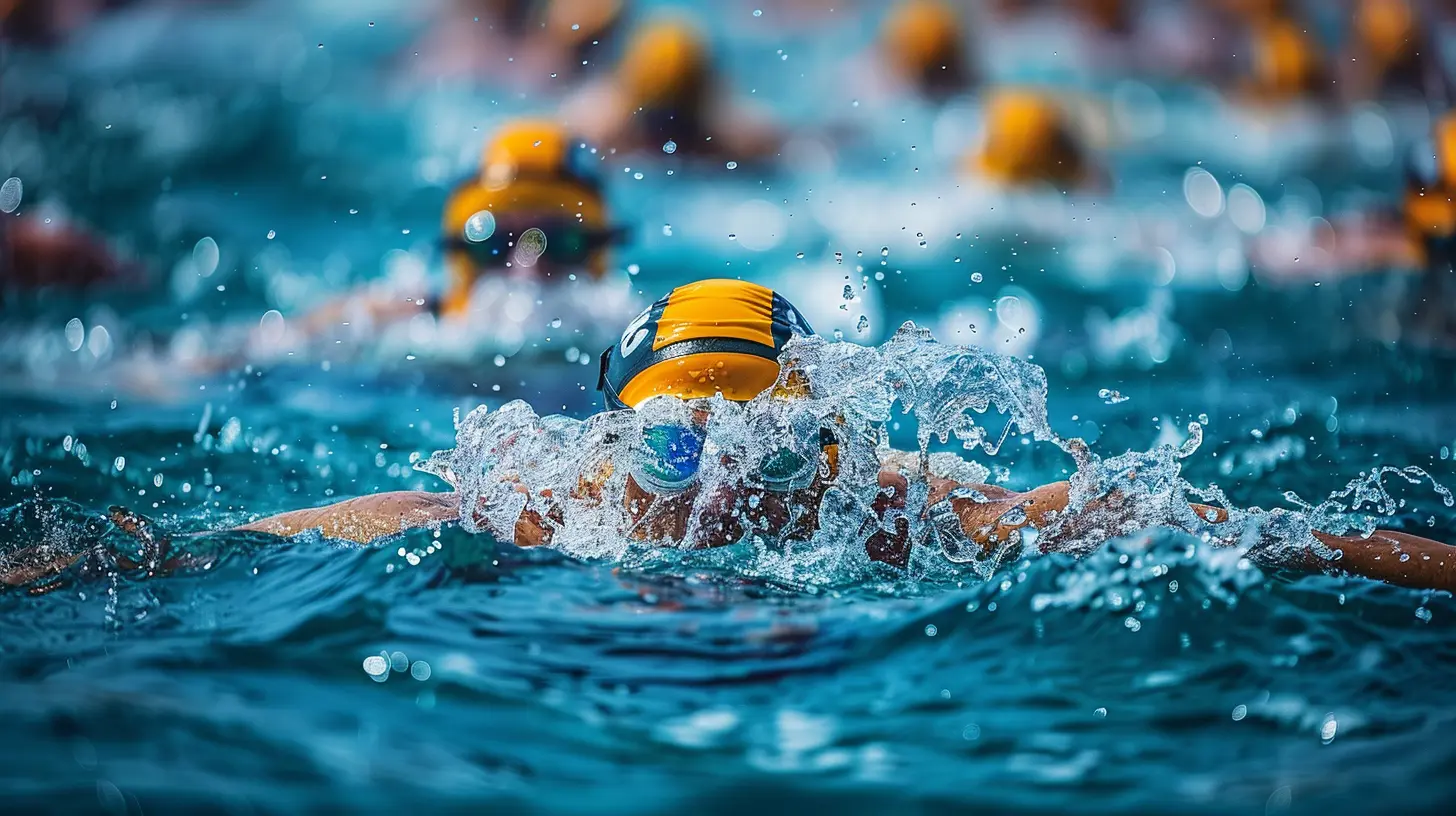
Final Thoughts
Pacing yourself during endurance swims is both an art and a science. It takes practice, patience, and a good understanding of your body to get it right. However, by finding your baseline pace, breaking your swims into segments, focusing on technique, and using tools like tempo trainers, you can make huge strides in your endurance swimming performance.Remember, the key to a successful endurance swim isn’t about how fast you start—it’s about how well you finish. So, swim smart, conserve your energy, and most importantly, enjoy the process. After all, there’s no better feeling than gliding through the water, knowing you’ve paced yourself perfectly.
all images in this post were generated using AI tools
Category:
SwimmingAuthor:

Easton Simmons
Discussion
rate this article
20 comments
Jocelyn Newton
Remember, folks: pacing in endurance swims isn’t just about speed; it’s about finding your ‘splash zone’—the sweet spot where you glide like a dolphin, not flounder like a fish out of water!
March 29, 2025 at 12:36 PM

Easton Simmons
Great analogy! Finding that 'splash zone' is key to efficient endurance swimming.
Abigail McMeekin
Great tips! Pacing is key to enjoying those long swims. Remember to listen to your body, find your rhythm, and most importantly, have fun! Every stroke is a step toward your goals! Keep swimming strong! 🌊🏊♀️
January 31, 2025 at 6:02 AM

Easton Simmons
Thank you! Absolutely, pacing and listening to your body are essential for maximizing enjoyment and performance in endurance swims. Keep swimming! 🌊🏊♀️
Thalwen Robinson
Great tips! Proper pacing in endurance swims is essential for maximizing performance. Focusing on breathing, maintaining a steady stroke rhythm, and monitoring energy levels can truly enhance the overall swimming experience.
January 26, 2025 at 5:21 AM

Easton Simmons
Thank you! I'm glad you found the tips helpful. Proper pacing is indeed key to enhancing both performance and enjoyment in endurance swimming.
Victor Wood
Swimming is like chocolate: too much too fast can leave you feeling sick! Pace yourself, savor the strokes, and enjoy the splash!
January 21, 2025 at 9:53 PM

Easton Simmons
Great analogy! Just like chocolate, finding that balance in swimming enhances the experience without overwhelming you. Enjoy every stroke!
Rhea Hunter
Pacing isn’t just strategy; it’s your lifeline in endurance swims. Master it, or drown in your own ambition!
January 12, 2025 at 9:17 PM

Easton Simmons
Absolutely! Pacing is crucial in endurance swimming; it's all about finding that balance to sustain energy and avoid burnout. Master it, and you'll thrive!
Tamara Hensley
Swimming for endurance? Think of it like a leisurely buffet—savor each lap, don’t rush! Pace yourself like a tortoise in a speedo, enjoying the journey while eyeing that finish line dessert. Remember, slow and steady keeps the splashes to a minimum. Happy swimming!
January 9, 2025 at 1:58 PM

Easton Simmons
Thanks for the fun analogy! Emphasizing a steady pace truly makes endurance swimming more enjoyable. Happy swimming!
Flynn Brooks
Pacing in endurance swims transcends mere technique; it embodies the delicate balance between body and mind. Embracing discomfort while harmonizing breath and rhythm reveals not just physical stamina but a profound journey of self-discovery.
January 4, 2025 at 1:14 PM

Easton Simmons
Absolutely! Pacing in endurance swims is indeed a holistic experience, merging physical capabilities with mental resilience. Embracing discomfort and finding that rhythm is key to both performance and personal growth. Thank you for sharing your insights!
Maribel Middleton
Pacing in endurance swims is crucial for optimizing performance and preventing fatigue. Swimmers should focus on maintaining a steady stroke rate and monitoring heart rate to find a sustainable rhythm. Incorporating interval training can enhance stamina, while practicing proper breathing techniques will ensure efficiency, ultimately leading to better race outcomes.
December 31, 2024 at 5:24 AM

Easton Simmons
Absolutely! Pacing is key in endurance swimming. By maintaining a steady stroke and monitoring heart rate, swimmers can enhance stamina and efficiency, leading to improved performance in races. Interval training and proper breathing are essential tools for achieving this balance. Thank you for highlighting these important strategies!
Nina Kane
Great article! Pacing in endurance swims can be incredibly challenging, both physically and mentally. It’s important to listen to your body and find your rhythm. Remember, it’s not just about finishing, but enjoying the journey. Thanks for sharing such valuable tips for swimmers!
December 29, 2024 at 5:29 AM

Easton Simmons
Thank you for your thoughtful comment! I'm glad you found the tips helpful. Happy swimming!
Naomi Griffin
Pacing isn’t just strategy; it’s survival. Embrace the grind, trust your training, and never second-guess your power. Own the water, or it’ll own you!
December 26, 2024 at 7:47 PM

Easton Simmons
Absolutely! Mastering your pacing is crucial for long-distance swims. Trust your training, stay confident, and maintain control in the water to ensure a successful swim.
Sabrina Rodriguez
Secrets beneath the surface.
December 26, 2024 at 4:59 AM

Easton Simmons
Absolutely! Understanding your body's limits is key to uncovering those 'secrets' and improving endurance.
Grey McKellar
Absolutely loved this article! Pacing is key to enjoying endurance swims, and these tips are super helpful. Can’t wait to dive into the water and apply them! Here's to endless smiles and smooth strokes! 🏊♂️✨
December 25, 2024 at 4:58 AM

Easton Simmons
Thank you! I'm thrilled you found the tips helpful. Wishing you many joyful swims ahead! 🏊♂️✨
Valeris McInnes
Effective pacing in endurance swims hinges on consistent breathing, steady strokes, and mental focus to maintain energy throughout.
December 24, 2024 at 8:20 PM

Easton Simmons
Thank you for your insightful comment! Consistent breathing and focus are indeed crucial for effective pacing in endurance swimming.
Zevin McWhorter
Great tips for effective pacing!
December 24, 2024 at 12:02 PM

Easton Simmons
Thank you! I'm glad you found the tips helpful! Happy swimming!
Aurelia McFadden
This article highlights the critical balance between speed and stamina in endurance swimming. However, it could benefit from more emphasis on mental strategies, such as visualization and positive self-talk, which are equally vital. Integrating these psychological tools can enhance performance and help swimmers tackle the inevitable fatigue during long distances.
December 24, 2024 at 4:16 AM

Easton Simmons
Thank you for your insightful comment! I agree that mental strategies like visualization and positive self-talk are crucial for endurance swimming and will consider incorporating them in future discussions.
Meagan McNulty
Swim like a snail on a caffeine buzz—slow and steady wins the rubber duck race!
December 23, 2024 at 8:28 PM

Easton Simmons
Great analogy! Pacing is all about finding that balance for optimal performance. 🦆🏊♀️
Camden Oliver
Pacing in endurance swims is crucial; mastering breathing patterns and rhythm can significantly enhance performance and enjoyment in the water.
December 23, 2024 at 11:20 AM

Easton Simmons
Absolutely! Proper pacing and effective breathing techniques are essential for optimizing both performance and enjoyment in endurance swims.
Nellie Blair
Great tips for mastering swim endurance!
December 23, 2024 at 5:04 AM

Easton Simmons
Thank you! I'm glad you found the tips helpful for building swim endurance!
Ezra McWhorter
Effective pacing in endurance swims requires understanding your energy expenditure, maintaining a steady stroke rate, and incorporating strategic breathing to optimize performance and prevent fatigue.
December 22, 2024 at 9:30 PM

Easton Simmons
Thank you for highlighting these key elements! Understanding energy expenditure and implementing strategic breathing are crucial for effective pacing in endurance swims. Your insights enhance the discussion on optimizing performance and reducing fatigue.
Gunner McClure
Great tips! Proper pacing is crucial for endurance swims; it enhances performance and prevents early fatigue.
December 22, 2024 at 3:48 AM

Easton Simmons
Thank you! I'm glad you found the tips helpful—proper pacing truly makes a difference in endurance swimming!
MORE POSTS

How Teams Use Trades to Build Long-Term Success

NBA All-Star Game: Predicting the MVP and Key Performers

Snowboarding in the Alps: What You Need to Know Before You Go

The Best Cardio Exercises for Busy Schedules

Inside the Mind of a Winning Coach: Strategies for Success
![The Passion of [Player Name]: What Fuels Their Drive to Win](/pictures/blog/small/the-passion-of-player-name-what-fuels-their-drive-to-win_4.webp)
The Passion of [Player Name]: What Fuels Their Drive to Win

Top Mistakes to Avoid in Amateur Sports Training
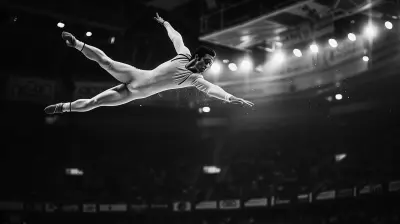
Olympic Gymnastics: The Balance Between Power and Grace

The Emotional Rollercoaster of Sports Documentaries

From Track to Pool: Comparing the Most Grueling Olympic Events

Building a Dynasty: The Coach Behind the Winning Streak

The Evolution of Surfing: From Ancient Polynesia to Modern Day